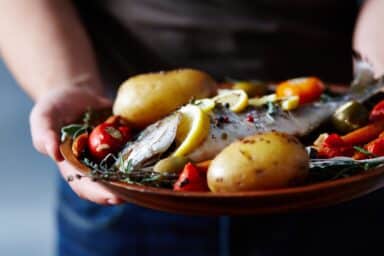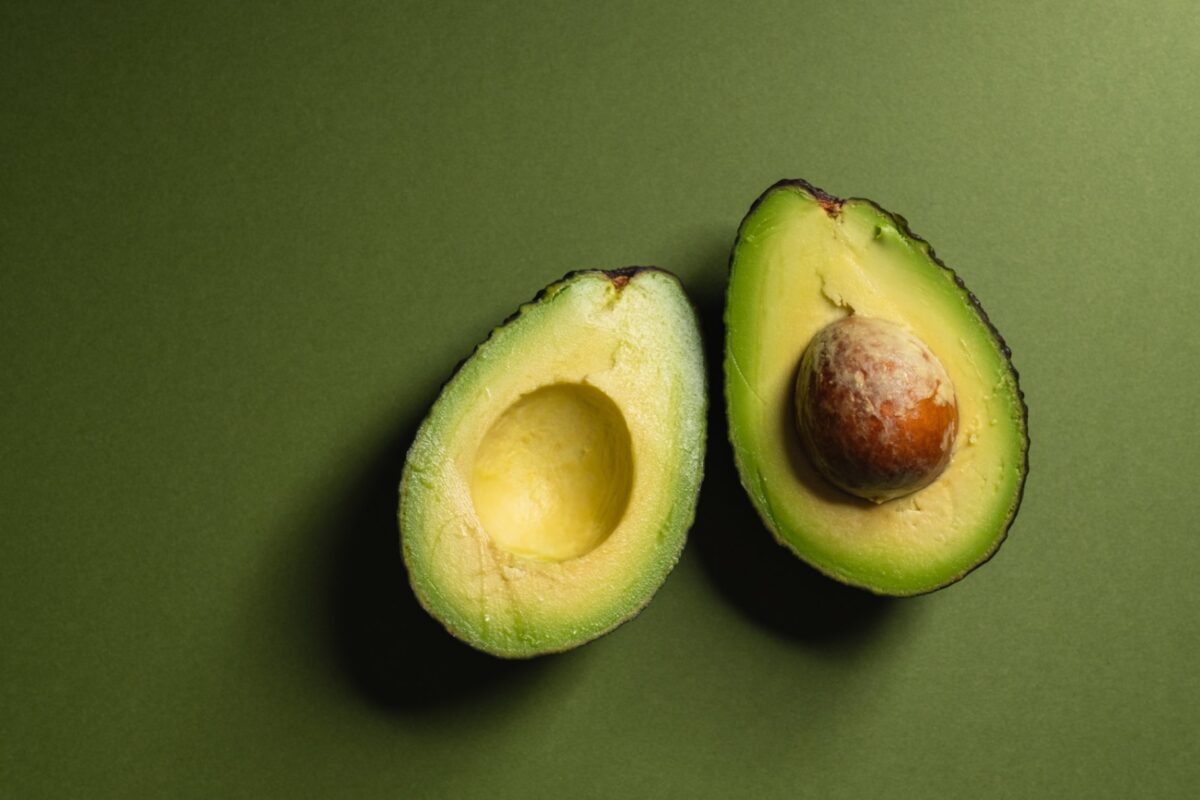Heart-Healthy Diet Tips
Eating to prevent heart disease and improve cardiovascular health

This therapist directory is offered in partnership with BetterHelp. If you sign up for therapy after clicking through from this site, HelpGuide will earn a commission. This helps us continue our nonprofit mission and continue to be there as a free mental health resource for everyone.
Need to talk to someone now? Find a crisis helpline
If you're a BetterHelp therapist with questions about your directory listing, please contact therapists@betterhelp.com
Think all fat is bad for you? Here’s everything you need to know about dietary fat, including how to choose good fats over bad fats and the power of omega-3s.

Fat is a type of nutrient, and just like protein and carbohydrates, your body needs some fat for energy, to absorb vitamins, and to protect your heart and brain health. For years we’ve been told that eating fat will add inches to your waistline, raise cholesterol, and cause a myriad of health problems. But now we know that not all fat is the same.
“Bad” fats, such as artificial trans fats and saturated fats, are guilty of the unhealthy things all fats have been blamed for—weight gain, clogged arteries, an increased risk of certain diseases, and so forth. But “good” fats such as unsaturated fats and omega-3 fatty acids have the opposite effect. In fact, healthy fats play a huge role in helping you manage your moods, stay on top of your mental game, fight fatigue, and even control your weight.
By understanding the difference between good and bad fats and how to include more healthy fat in your diet, you can improve how well you think and feel, boost your energy, and even trim your waistline.
Dietary fat plays a major role in your cholesterol levels. Cholesterol is a fatty, wax-like substance that your body needs to function properly. In and of itself, cholesterol isn’t bad. But when you get too much of it, it can have a negative impact on your health. As with dietary fat, there are good and bad types of cholesterol.
Rather than the amount of cholesterol you eat, the biggest nutritional influence on your cholesterol levels can be the type of fats you consume. So as well as counting cholesterol, it’s important to focus on replacing bad fats with good fats.
Since fat is an important part of a healthy diet, rather than adopting a low-fat diet, it’s more important to focus on eating more beneficial “good” fats and limiting harmful “bad” fats.
Monounsaturated fats and polyunsaturated fats are known as the “good fats” because they are good for your heart, your cholesterol, and your overall health. These fats can help to:
Adding more of these healthy fats to your diet may also help to make you feel more satisfied after a meal, reducing hunger and thus promoting weight loss.
Monounsaturated fat – good sources include:
Polyunsaturated fat – good sources include:
Trans fat. Small amounts of naturally occurring trans fats can be found in meat and dairy products but it’s artificial trans fats that are considered dangerous. This is the worst type of fat since it not only raises bad LDL cholesterol but also lowers good HDL levels. Artificial trans fats can also create inflammation, which is linked to heart disease, stroke, and other chronic conditions and contributes to insulin resistance, an early warning sign of developing Type 2 diabetes.
In the U.S., the Food and Drug Administration (FDA) has effectively outlawed the use of artificial trans-fats in commercially prepared food and the World Health Organization (WHO) has called on other governments around the world to eliminate the use of trans fats by 2023. However, products made before the FDA ban may still be available for sale. Since products can be listed as having “zero trans fats” even if they contain up to 0.5 grams of trans fat per serving, it’s still important to carefully read food labels. Look for ingredients referred to as “partially hydrogenated oils.” These hidden sources of artificial trans fats can add up quickly.
If your country still allows the use of artificial trans fats, remember that no amount is considered safe, so aim to eliminate it from your diet.
Trans fat – primary sources include:
Saturated fat. While not as harmful as trans fat, saturated fat can raise bad LDL cholesterol and too much can negatively impact heart health, so it’s best consumed in moderation. Saturated fats can also increase the size and number of triglycerides in your blood, which may be harmful to the arteries. While there’s no need to cut out all saturated fat from your diet, most nutrition experts recommend limiting it to 10% of your daily calories. This is about 10 to 15 grams per day for most adults, the equivalent of one to two tablespoons of butter.
Saturated fat – primary sources include:
For decades, doctors, nutritionists, and health authorities have told us that a diet high in saturated fats raises blood cholesterol and increases the risk of heart disease and stroke. However, recent studies have made headlines by casting doubt on those claims, concluding that some people who eat lots of saturated fat do not experience more cardiovascular disease than those who eat less.
So, does that mean it’s OK to eat as much saturated fat as you want?
As with any studies, it’s important to remember that factors such as age, weight, environment, medications, and genetics also play a part, therefore applying these results to everyone can be problematic.
What these studies highlight is that when cutting down on saturated fats in your diet, it’s important to replace them with the right foods. For example, swapping animal fats for vegetable oils—such as replacing butter with olive oil—can help lower your cholesterol and reduce your risk for disease. However, swapping animal fats for refined carbohydrates—such as replacing your breakfast bacon with a bagel or pastry—won’t have the same benefits. That’s because eating refined carbohydrates or sugary foods can have a similar negative effect on your cholesterol levels, your risk for heart disease, and your weight.
Limiting your intake of saturated fat can still help improve your health—as long as you take care to replace it with good fat rather than refined carbs. In other words, don’t go no fat, go good fat.
Omega-3 fatty acids are a type of polyunsaturated fat and are especially beneficial to your health. There are different types of omega-3s: EPA and DHA are found in fish and algae and have the most health benefits, while ALA comes from plants and is a less potent form of omega-3, although the body does convert ALA to EPA and DHA at low rates.
Research has shown that a diet rich in omega-3s may help to:
The American Heart Association recommends that people with documented heart disease get about 1 gram of EPA plus DHA per day. For the rest of us, the AHA recommends eating at least two 3.5 oz. (100 g) servings of fish per week.
Despite the health benefits, nearly all seafood contains traces of pollutants, including the toxic metal mercury. The concentration of pollutants increases in larger fish, so avoid eating shark, swordfish, tilefish, and king mackerel.
Most adults can safely eat 12 oz. (three 4 oz. or 114 g servings) of cooked seafood a week. For women who are pregnant, nursing mothers, and children under 12, choose fish lower in mercury, such as shrimp, canned light tuna, salmon, or pollock. You can also protect yourself by varying the types of fish that you include in your diet.
While omega-3s are best obtained through food, there are many omega-3 and fish oil supplements available. Fish oil contains no mercury (mercury binds to protein, not fat) and very low amounts of other contaminants.
For some, fish oil capsules can be hard to swallow and may leave a fishy aftertaste. Keeping the capsules in the freezer before taking them can help or you can look for odorless or burpless capsules.
BetterHelp is an online therapy service that matches you to licensed, accredited therapists who can help with depression, anxiety, relationships, and more. Take the assessment and get matched with a therapist in as little as 48 hours.
Take Assessment HelpGuide is user supported. We earn a commission if you sign up for BetterHelp’s services after clicking through from this site. Learn moreVegetable oils can lower LDL (bad) cholesterol and triglycerides, and raise HDL (good) cholesterol.
The food industry likes to tout the benefits of tropical oils such as palm and coconut oil, while dietary guidelines shun them for being too high in saturated fat. So, who is right?
Tropical oils can have a complex effect on blood cholesterol levels. For example, they can raise “bad” LDL cholesterol but also raise “good” HDL cholesterol, while their effects on other markers for heart disease are not yet clearly known.
Instead of obsessively counting fat grams, aim for a diet rich in a variety of vegetables, fruit, nuts, and beans, with two or more weekly servings of fatty fish, moderate amounts of dairy, small amounts of red meat, and only occasional fried or processed meals.
This might mean replacing fried chicken with grilled chicken, swapping out some of the red meat you eat with other sources of protein such as fish, chicken, or beans, or using olive oil rather than butter. Following a Mediterranean diet can also help ensure you’re getting enough good fats in your diet and limiting the bad ones.
Limit your intake of saturated fats by replacing some of the red meat you eat with beans, nuts, poultry, and fish, and switching from whole milk dairy to lower fat versions. But don’t make the mistake of replacing saturated fat with refined carbohydrates and sugary foods.
Eat omega-3 fats every day. Include a variety of fish sources as well as plant sources such as walnuts, ground flax seeds, flaxseed oil, canola oil, and soybean oil.
Cook with olive oil. Use olive oil for stovetop cooking rather than butter, stick margarine, or lard. For baking, try canola oil.
Eat more avocados. Try them in sandwiches or salads or make guacamole. Along with being loaded with heart- and brain-healthy fats, they make for a filling meal.
Reach for the nuts. You can add nuts to vegetable dishes, use them instead of breadcrumbs on chicken or fish, or make your own trail mix with nuts, seeds, and dried fruit.
Snack on olives. Olives are high in healthy monounsaturated fats and make for a low-calorie snack. Try them plain or make a tapenade for dipping.
Dress your own salad. Commercial salad dressings are often high in unhealthy fat or added sugars. Create your own healthy dressings with olive, flaxseed, or sesame oils.
Last updated or reviewed on January 16, 2025Millions of readers rely on HelpGuide.org for free, evidence-based resources to understand and navigate mental health challenges. Please donate today to help us save, support, and change lives.
Donate to HelpGuide.org today